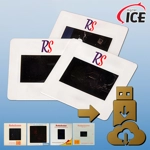

Hopefully with the information below you should be able to easily identify the type of cine film you have. If however you require any further information please just Contact Us
FRAME BY FRAME HD SCANNING
We offer frame by frame, full HD scanning for all the formats below. Full enhancement is standard with further details below.
PRICING
We list all types of accepted cine film for information purposes . Please see our price list for full details
CINE REEL SIZE GUIDE
| REEL SIZE | 3 inch | 4 inch | 5 inch | 7 inch | 8 inch |
| LENGTH | 50ft | 100ft | 200ft | 400ft | 600ft |
| ESTIMATED LENGTHS | |||||
8MM CINE FILM
Standard 8mm, also known as Regular 8 was developed during the great depression by Eastman Kodak. It was released into the market in 1932 to create a home use format the was less expense than 16mm which came before.
SUPER8 CINE FILM
Released in 1965, Super8 format was quickly adopted by many home and amateur film makers. The image quality was an improvement from standard 8 and it was easier to use thanks to the cartridge loading system. This format can be silent or have sound.
9.5MM CINE FILM
This format was introduced by Pathé in 1922. Its main purpose was to release copies of commercially made films to home users as a less expensive option but a simple camera was also released at a later date.
16MM CINE FILM
16mm format was a popular and economical type of film if used for commercial purposes. It was generally used for educational and televisual film making or even low budget motion pictures but we also see home movies filmed in this format. It was released by Eastman Kodak in 1923 and can be silent or have a sound track.
We hope this guide has helped you identify your films but if you have any questions please just Get in Touch























